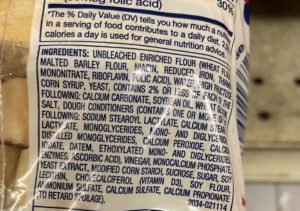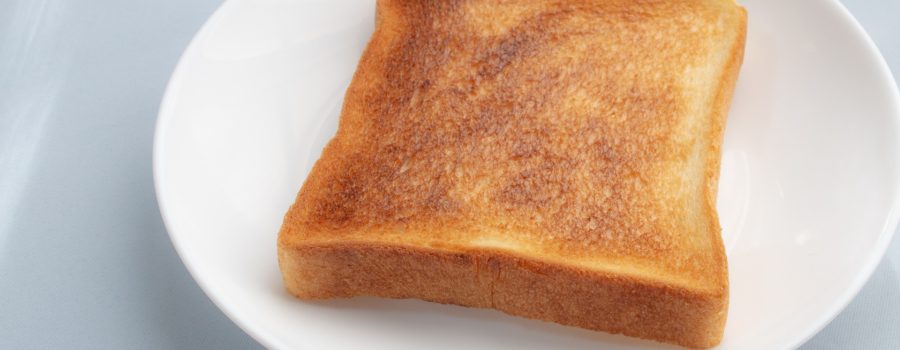Browned Toast—Good or Bad?
When I first read that browned toast as well as other charred starchy foods may have their own health risks, I smiled. Do you know why? I felt again that Someone is watching over me, because I never liked them. The same feeling I had when I read about burnt grilled meats. There, a different carcinogen is being formed—polycyclic aromatic hydrocarbons (PAHs).
Browned toast, browned French fries or roasted potatoes, fried rice—all these can form a chemical called acrylamide. Chips, cakes, biscuits and other baked goods, as well as some (toasted) breakfast cereals they can all form more or less acrylamide when cooked at temperatures over 250 F—120 C. The darker the color, the higher the content of this chemical.
Potatoes and starch from grains and flour are not the only culprits, apparently browning root vegetables with higher sugar content (parsnips or carrots), allows some acrylamide to form as well. I have to add that smokers are exposed to much higher levels anyway, but here I’m referring to all of us, even those who don’t smoke but like browned starches.
What is wrong with acrylamide for our health? The toxic properties, such as neurologic toxicity, altering DNA (genotoxicity), carcinogenic effects and reproductive toxicity) were first demonstrated in the E.U., by the Scientific Committee on Toxicity, Ecotoxicity and the Environment in 2001. Numerous other studies by scientists around the world, including in the U.S., followed since.
The reason why acrylamide forms is a reaction between amino acids (from grain proteins), starch/sugars and water, that takes place during cooking at high temperatures and/or for a long duration.  It appears that the high fructose corn syrup, molasses, and other sugars added to many brands of bread could contribute to higher levels, especially with really browned toast.
It appears that the high fructose corn syrup, molasses, and other sugars added to many brands of bread could contribute to higher levels, especially with really browned toast.
Reducing certain components from grain by using yeast, removing ammonium salts, and reducing fructose can all decrease the levels of this possible carcinogen. That’s another good reason to avoid breads made with a long list of foods additives and opt for more traditionally cooked breads instead.
.
A detail I didn’t expect was that sugar levels rise in root vegetables kept at low temperatures in the fridge. And here’s is something else that’s going to surprise you: roasted coffee beans! With dark roast more acrylamide is being formed, compared to light roast.
We can minimize the formation and intake of this toxic and carcinogenic acrylamide by making some adjustments:
- settle for a golden color toast
- foods cooked using bread crumbs (cutlets, wings), ideally should also be golden not browned or burnt
- roast starchy foods (potatoes, root vegetables) without browning them or find other ways to cook them (steaming, boiling)
- opt for golden French fries (although better not to eat them much)
- avoid chips, crisps, toasted breakfast cereals, and bakery products—many cooked over the 250 F (120 C) limit
- thin crust pizza? —make sure it’s not burnt
- keep raw potatoes above 42 F (6 C), not in the fridge—the average fridge temperature is 35-38 F
- last but not least, opt for light roast coffee
It’s not a major danger to occasionally be exposed to browned toast or other foods, but looking at the list above, there are many instances when this can happen. Some quick fixes are:
- removing the burnt parts
- a new piece of toast it’s easy to make
- not all the roasted potatoes or root vegetables in the pan come out darkly browned—we can pick the golden ones or get rid of the dark or burnt parts
- removing the burnt areas of breaded coating on cutlets or wings
We usually have options to remove possible dangerous substances from our foods. Without getting too scared, the most important first step is to become aware. Afterwards, we know what to do to “stay gold”—just like in The Outsiders.




